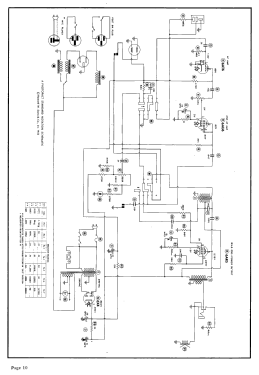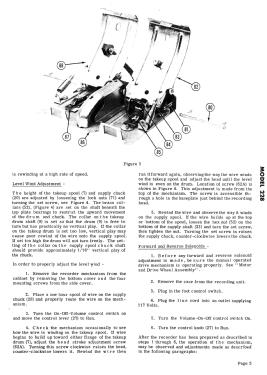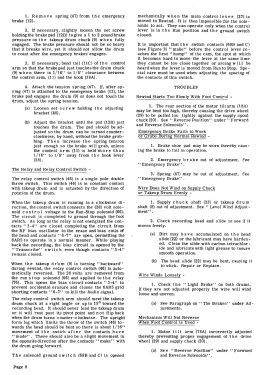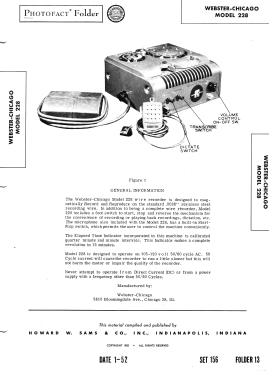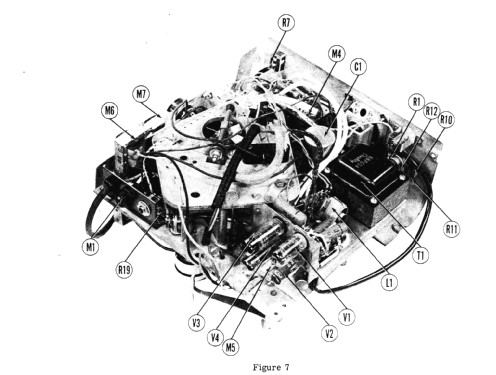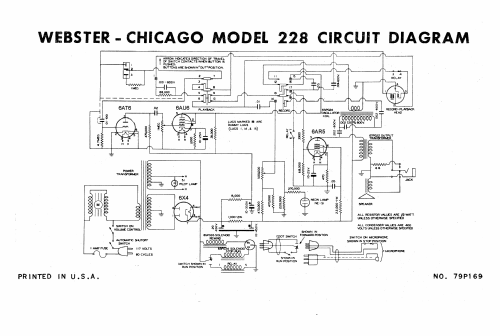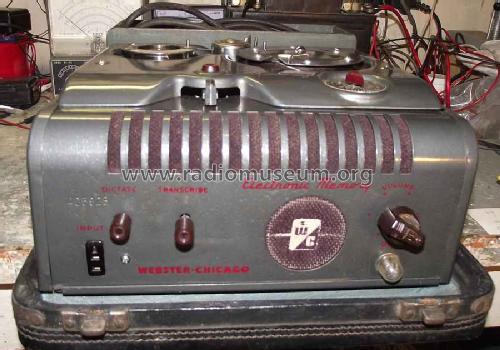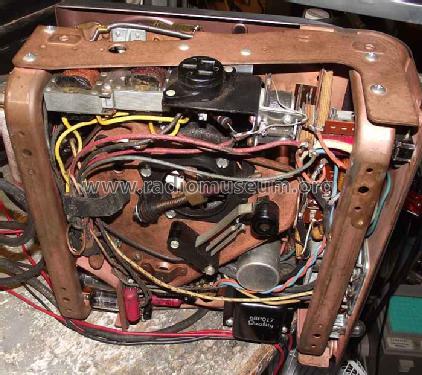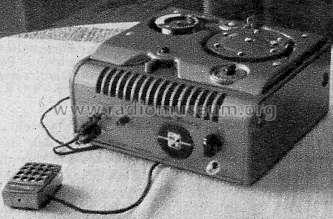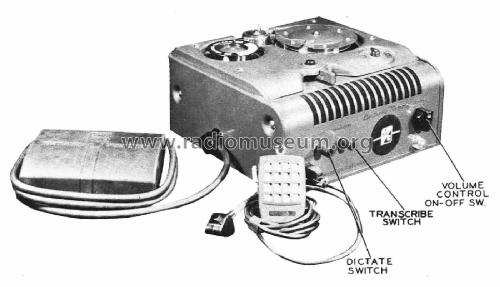Wire Recorder 228
Webster Co., The, Webster-Chicago, Webcor; Chicago (IL)
- Pays
- Etats-Unis
- Fabricant / Marque
- Webster Co., The, Webster-Chicago, Webcor; Chicago (IL)
- Année
- 1952 ?
- Catégorie
- Enrégistreur et/ou reproducteur son/video
- Radiomuseum.org ID
- 98819
-
- Brand: Webcor
Cliquez sur la vignette du schéma pour le demander en tant que document gratuit.
- No. de tubes
- 4
- Principe général
- Amplification audio
- Gammes d'ondes
- - sans
- Particularités
- Magnétophone à fil
- Tension / type courant
- Alimentation Courant Alternatif (CA) / 60 Hz, 117V = 110 -120 Volt
- Haut-parleur
- HP dynamique à aimant permanent + bobine mobile
- Matière
- Boitier métallique
- De Radiomuseum.org
- Modèle: Wire Recorder 228 - Webster Co., The, Webster-
- Forme
- Modèle de table profil bas (grand modèle).
- Remarques
-
The Webster-Chicago model 228 wire recorder is designed to magnetically record and reproduce on the standard .0036" stainless steel recording wire. In addition to being a complete wire recorder, model 228 includes a foot switch to start, stop and reverse the mechanism for the convenience of recording or playing back recordings, dictation, etc. The microphone also included with the model 228, has a built-in start-stop switch, which permits the user to control the machine conveniently.
- Littérature
- Funk-Technik (FT) (6/1952)
- Schémathèque (1)
- Riparazioni - Scuola Radio Elettra
- Schémathèque (2)
- Photofact Folder, Howard W. SAMS (Set 156, folder 13, dated 1-52)
- Auteur
- Modèle crée par d'un membre de A. Voir les propositions de modification pour les contributeurs supplémentaires.
- D'autres Modèles
-
Vous pourrez trouver sous ce lien 448 modèles d'appareils, 216 avec des images et 371 avec des schémas.
Tous les appareils de Webster Co., The, Webster-Chicago, Webcor; Chicago (IL)
Musées
Le modèle Wire Recorder peut être vu dans les musées suivants.
Contributions du forum pour ce modèle: Webster Co., The,: Wire Recorder 228
Discussions: 1 | Publications: 1
Dear colleagues,
I recently had one of these beautiful machines in for a minor service. After getting it to work, I naturally went on to play one of the reels. (It was a recording of the "Bing Crosby Show" taken from a Voice of America broacast. All went well, and at the end of the recording I rewound it. On playing it again, disaster! the wire had jammed between the bulk of the winding and the side of the reel, because the rewinding process had been uneven due to bailer misalignment. I should have inspected the reel before playing to make sure it was tightly wound and, more importantly, even. Alas, this cost me many minutes of the recording, as the resulting tangle was too complicated to undo.
The bailer should move up and down smoothly and wind evenly on the reels. I hope this note saves someone else from making the same mistake.
Regards - Bryce
PS - The neon light serves as a recording level indicator- not an indication that power has been applied.
Bryce Ringwood, 15.Apr.11
